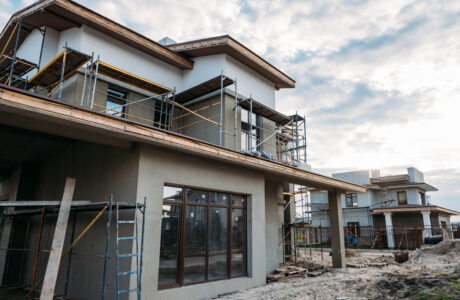In this week’s Mortgage Market Update, we’ll review how mortgage rates are currently trending, where they’re likely headed and how volatile the rate changes may be for the week ahead. Also, we’ll explore the continued challenges of a tight housing inventory and how this could potentially impact this spring’s real estate season.
First, let’s look at rates.
Mortgage Rate Trends for the Week of February 6, 2017
According to Sigma Research, mortgage rates are currently trending LOWER. Although the change is minor, the +10bps improvement in last week’s MBS market was not enough to improve mortgage rates or fees. And with high volatility last week, it’s not shocking that rates moved the way they did.
As for the seven-day rate forecast, Sigma Research anticipates NEUTRAL movement. There are three big events however that have the potential to cause changes in mortgage rates this week: President Donald Trump’s possible financial stimulus proposal and possible tax reform proposal, Fed officials making announcements (Patrick Harker on 2/06, James Bullard on 2/09 and Charles Evans on 2/9), and various international data being released from Japan, China and the European Central Bank.
Volatility levels are expected to be in the AVERAGE range, according to Sigma Research. The three things listed above are the likely events that can cause significant volatility in mortgage rates. However, we’re looking most likely in for a relatively calm week in mortgage rates. Of course, things can change very quickly with unexpected news.
As we so often say, the bottom line is to discuss the risks and benefits of locking in your interest rate with one of our mortgage professionals.
Now on to the spring real estate market and the lack of inventory.
Low Housing Inventory Could Be Problematic This Spring
Without ample homes on the market, house hunters this spring will have to pound more pavement to find their home sweet home.
In fact, the number of for-sale listings fell again in December to the lowest level since 1999, according to data from the National Association of Realtors (NAR). There were just 1.65 million homes for sale at the end of December, which at the current sales pace would take only about 3.5 months to exhaust. A normal, balanced market has about a six-month supply of homes for sale.
“To say early buyer demand is strong in early 2017 is an understatement — it’s titanic. Redfin data shows that buyers are out touring in droves, ready to pounce on the new listings that fit the bill,” said Nela Richardson, chief economist at Redfin. “The only thing missing is homes for sale to satisfy demand, because there just aren’t a lot of homes available to buy right now. We are in a real estate black hole until those listings show up again.”
The situation appears to be even more distressing in some local markets. The share of communities with supply at less than three months jumped from about 13 percent to more than 20 percent in the past year, according to a survey by Proteck Valuation Services, a real estate appraisal and analytics company. For example, in Dallas, the supply of homes for sale dropped by nearly 41 percent from December 2015 to December 2016.
“This means fierce competition for homes, where buyers that are able to act fast and pose less risk to the seller have the advantage. These ‘favored’ buyers would include those already pre-approved for a mortgage, those with larger cash down payments and those with no contingencies (like the sale of another home),” according to Proteck.
The lack of supply is a problem that is being made worse by weak home construction. Single-family housing starts continue to rise; however, the growth is very slow. Builders are still operating at well below normal construction levels, and that doesn’t even account for pent-up demand from the housing downturn and growing household formation.
“The homeownership rate is at a near 50-year low, and it could remain at this level, ” said Lawrence Yun, chief economist at the NAR. “I’m not sure this is the trend that America wants.”


























Comments are closed.